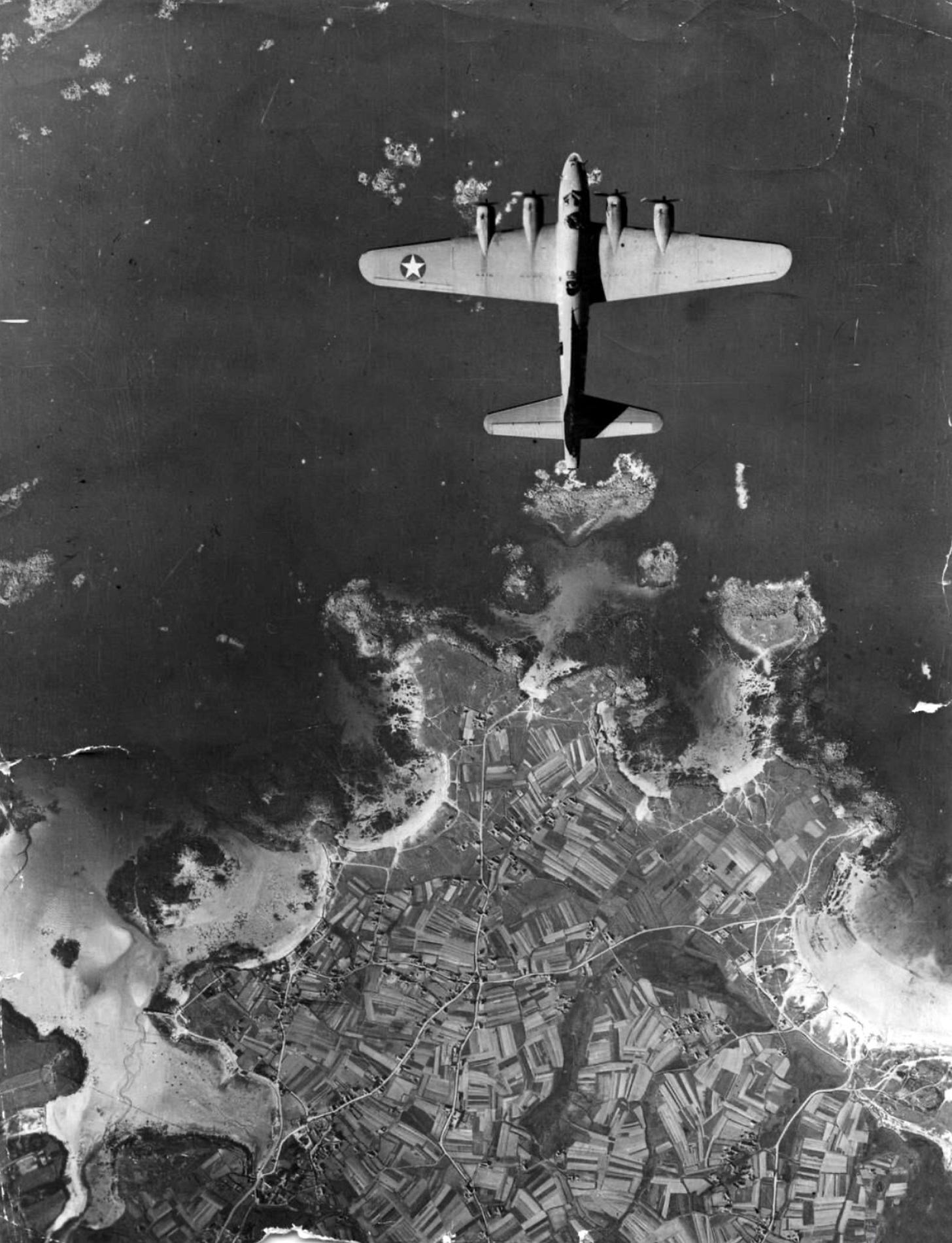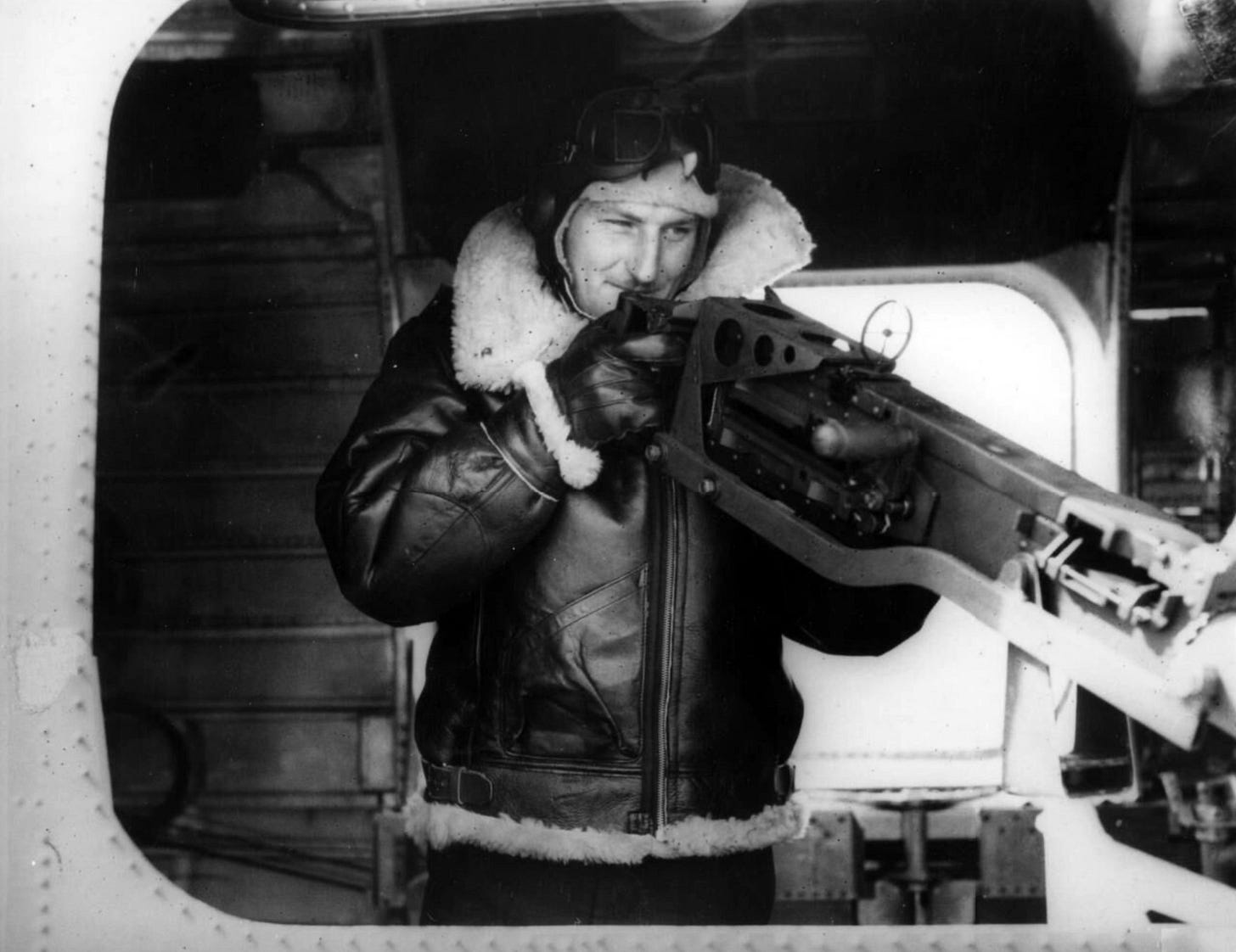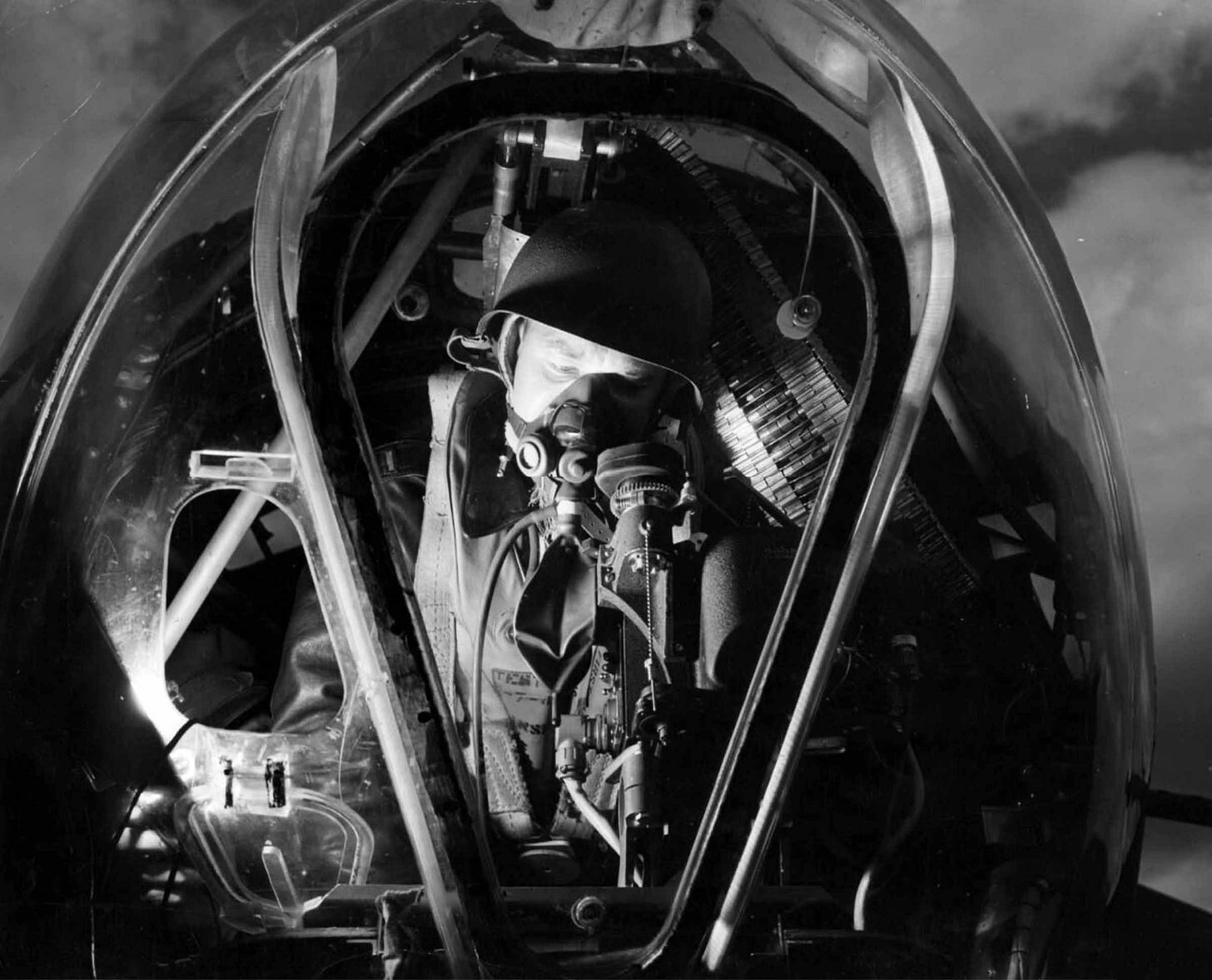USAAF attack U-Boat pens
18th March 1943: First Medal of Honor in skies over Europe as 8th Air Force bombers stay in disciplined formation during bomb run


The huge expansion of the 8th Eighth Air Force in Britain was now well underway, complementing the RAFs move to a heavy bomber fleet. The “round-the-clock” bombing of Germany was gradually becoming a reality. But both the RAF and USAAF faced challenges with the timing of their raids and the accuracy of their bombing. The aim was to get the maximum number of aircraft over the target in the shortest possible period of time - in order to overwhelm the flak defences - and to hit the target with as much of the bombload as possible.
At night RAF Bomber Command was developing its target marking techniques using the specialist Pathfinder force. By day the USAAF puts its hopes in a combination of tight, accurate, formation flying and the Norden bombsight.
Realizing that the success of the mission depended upon him, 1st Lt. Mathis, by sheer determination and willpower, though mortally wounded, dragged himself back to his sights, released his bombs, then died at his post of duty.

The highly secret Norden bombsight had been under development since the 1920s. Its sophisticated mechanical computer had been developed at enormous expense. In pre-war demonstrations, it had shown extraordinary accuracy. The prospect of hitting a target the size of a ship from a heavy bomber flying at altitude seemed realistic.
Yet under combat conditions, the US Navy had discovered that it was not able to fulfil this promise - they were now concentrating on dive-bombing and skip-bombing in the battle against the Japanese Navy.


